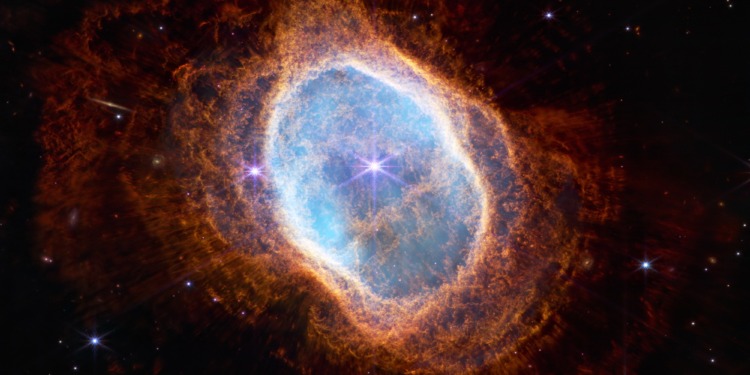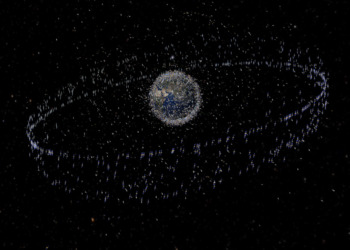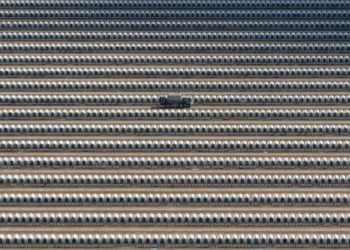The universe is approximately 13.8 billion years old, but if you could look back in time, which forgotten moments of the past would you choose to unfold and observe?
Your first day on earth? The Apollo 11 moon landing? Think bigger. The entire history of our universe? The bright seconds after the big bang? The evolution of our planet and solar system?
Last Christmas, NASA, the European Space Agency (ESA), and the Canadian Space Agency (CSA) joined forces to gift the world’s astronomers the best present they’ve ever received: an opportunity to glimpse into the past, at the birth of the universe, and the edge of time itself.
This other-worldly window into creation was not revealed by artistic metaphor, a magical time machine, or philosophy, but by one of the greatest scientific endeavours of our time: The James Webb Telescope, “the premier observatory of the next decade.”
More commonly referred to as “Webb,” this enormous infrared telescope began its voyage into the past after launching into space on Dec. 25, 2021, aiming to capture snapshots of the unknown and reveal the secrets of our hidden universe.
“It will study every phase in the history of our Universe,” says NASA, “We wonder. It’s our nature. How did we get here? Are we alone in the universe? How does the universe work? The James Webb Space Telescope is an ambitious scientific endeavour to answer these questions.”
After celebrating Webb’s first birthday this week, one year on, how have the space agency coalition and astronomers worldwide used the telescope to “unfold the universe” so far?
Unfolding the universe with Webb
As the “largest, most technically advanced telescope ever built,” as NASA says, Webb “stands on the shoulders” of its observatory predecessors such as Hubble, bringing their discoveries into sharper focus.
The state-of-the-art infrared-detecting technology Webb is equipped with will expand the “unique perspective of the universe” bestowed upon humanity by Hubble, and further “reveal the hidden universe to our eyes.”
From its low-earth orbit vantage point, Hubble has captured many never-before-seen portraits of the far corners and past moments of our universe, exploring the history and evolution of galaxies, stars and nebulae, as well as detailing the characteristics of black holes, exoplanets, and the accelerated expanding of our existence; a breakthrough discovery which won the Nobel Physics Prize in 2011.
Hubble’s images have defined modern-day astronomy, opened our eyes to what lies beyond, and catalysed our existential curiosity; Webb is the next step in our collective journey “of discovering secrets of the universe and searching for life beyond Earth.”
As NASA says, “We need to see farther and deeper.”
Related Articles: Climate Change on Mars: How Ancient Alien Life May Have Triggered Their Own Extinction | Aliens on Mars? NASA Discovers Signs of Ancient Life | NASA Dart Test Could Save Earth | Are We Alone? NASA Begins New UFO Research
Hubble has seen as far back as 500 million years after the big bang, but Webb can look past that, to the beginning of time.
How is this possible? Well, because like anything, it takes time for light to travel through space.
The light from the sun takes approximately eight minutes to reach our eyes, meaning we are effectively looking eight minutes into the past when we look up at the centre of our solar system. The sun is just over 90 million miles away from earth, whereas some of the stars detected by space telescopes are halfway across the universe, and their appearance observed by us today is in fact how they looked billions of years ago.
The first light of the earliest instances of the universe, the climate and atmosphere of other worlds, and the profiling of exoplanets beyond the known horizon, are just some of the discoveries possible with Webb.
After one year of life in space, one million miles above Earth gazing out into the abyss, what has Webb seen so far?
Here’s a snapshot of some of Webb’s biggest discoveries…
A glimpse into the past
Cosmic cliffs and glittering mountains
NASA describes this star-forming region as the “glittering landscape of star birth.” The stellar dust formation known as the “Carina Nebula” – which is actually a space nursery where new stars are born – is roughly 7,600 light-years away and resembles earthly “mountains” and “valleys.” The area has previously been photographed by Hubble, however, Webb’s take reveals previously hidden stars and insights.
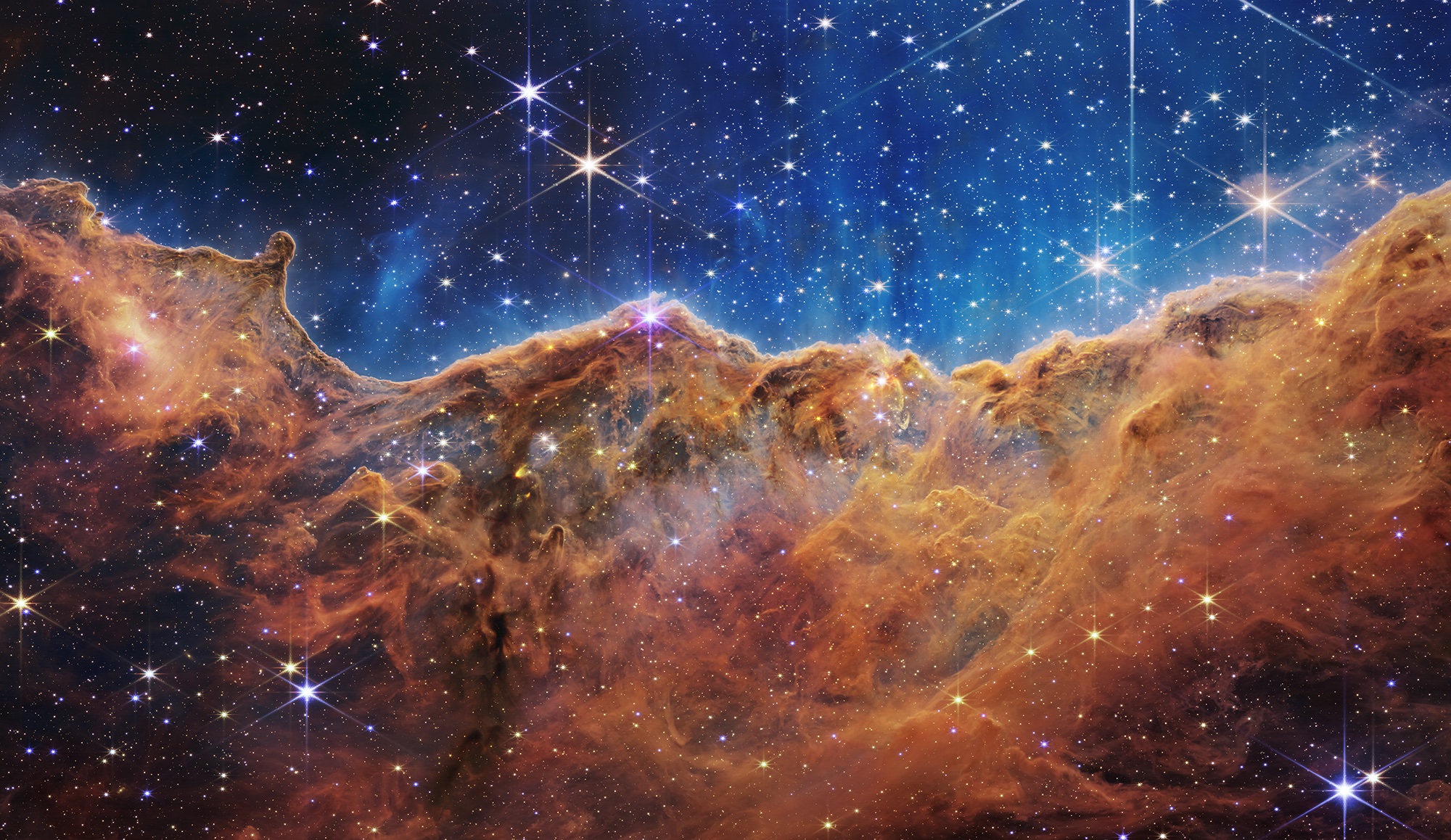
The dying star’s finale
Webb has also been able to capture new imagery of the Southern Ring Nebula which reveals a dying white dwarf star (similar to our sun) as it stops burning, ceases nuclear fusion, and sheds its outer gaseous layers in its final years.
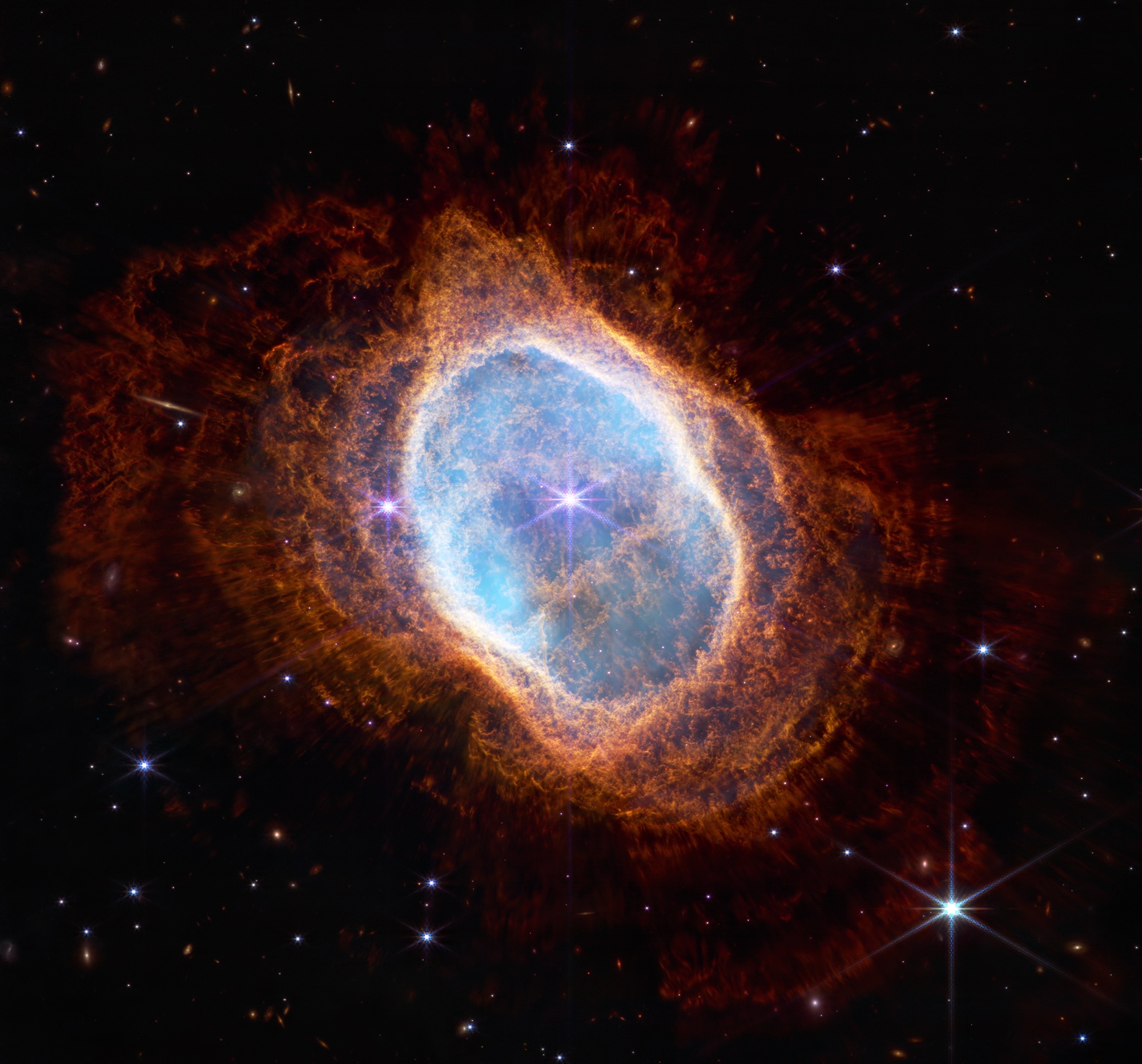
A mosaic of galaxies and black holes
This “cosmic dance” of five galaxies is known as “Stephan’s Quintet.” Webb has been able to reveal never-before-seen details of these galaxies, shedding light on their interaction and evolution.
Webb has also been able to capture visual evidence of a supermassive black hole in the top galaxy within the grouping. This is shown by the visible outflow of gas and dust being distorted and pulled in by the black hole which is 24 million times the mass of the sun.
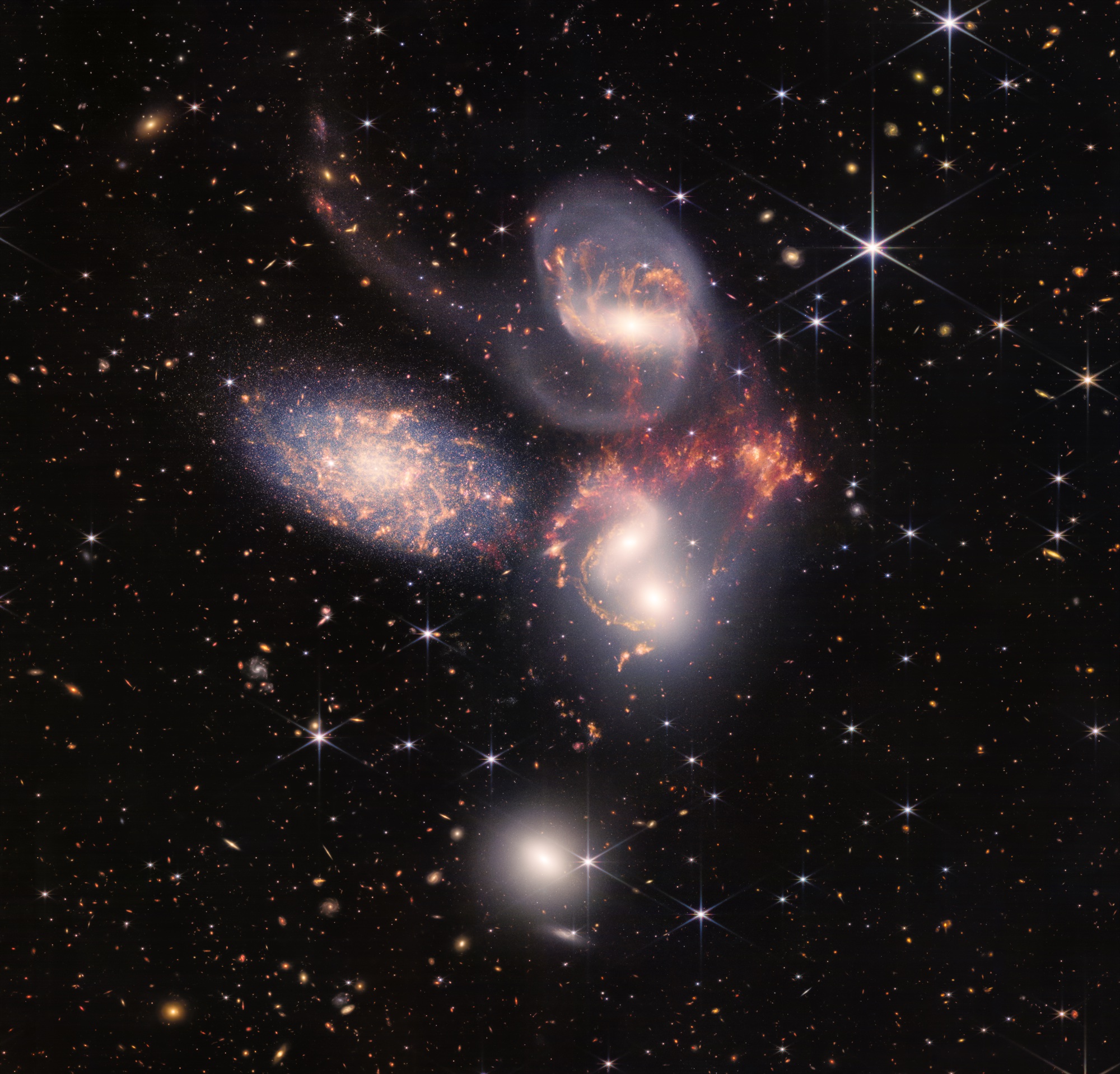
The hourglass
The vibrant colours of the molecular clouds in this nebula – known as dark cloud L1527 – are only visible in infrared light, now revealed by Webb’s next-generation technology. This image shows a young protostar within the 100,000-year-old cloud as it draws in material from its surroundings, and begins the process of forming into an adult star.

Slice in time
This is the most detailed image of the history of the universe to date:
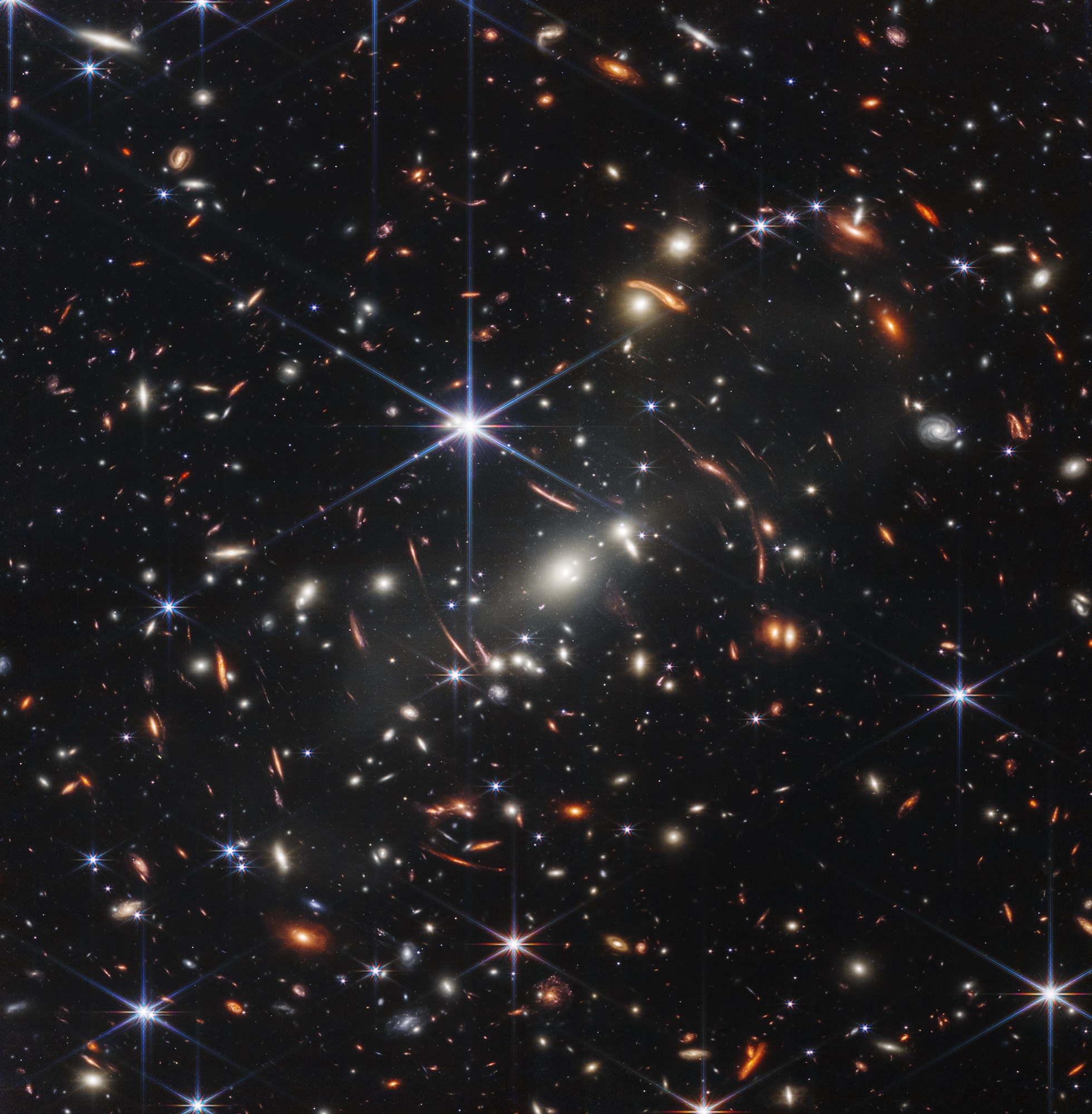
Known as “First Deep Field,” this eclectic portrait is the deepest view of thousands of distant galaxy clusters in the early stages of the universe ever taken. The appearance of the galaxies captured here depicts how they would have looked 4.6 billion years ago, so reveals an ancient slice in space time.
“This slice of the vast universe is approximately the size of a grain of sand held at arm’s length by someone on the ground,” says NASA.
Neptune’s rings
Neptune is an icy blue hostile planet close to the edge of our solar system, taking 164 years to orbit the sun in the darker outer region. Home to ferocious storms and fierce winds faster than the speed of sound, this image captured by Webb is the clearest view of Neptune’s rings to date, and could shed more light on the harsh atmospheric conditions of this mysterious planet.

Cosmic tarantula nebula
Webb has been able to paint a new picture of this well-known nebula which once resembled the shape of a spider. As NASA remarks, Webb’s new image of this star nursery known as “30 Doradus” now looks more like “a tarantula’s home — a burrow lined with its own spun silk” than the insect itself. That’s because Webb has been able to capture the nebula’s structure, and the thousands of young stars forming within it, with a never-seen-before level of detail.

The pillars of creation
NASA’s Hubble first captured the “Pillars of Creation” in 1995, but Webb’s new images reveal the formation in never-before-seen detail.
Webb’s snapshot of this haunting nebula that sits in front of the Milky Way reveals new stars in shades of pink, red, crimson, blue and yellow, depending on which stage of the stellar lifecycle they are in. This new data offers astrobiologists new insight into the stages of star formation.

Exoplanets
Aside from capturing breathtaking images of our universe’s many celestial formations, Webb has also been able to begin mapping out the atmosphere, chemical composition and climate of planets beyond our own solar system known as exoplanets.
NASA hopes that exploration of these mysterious exoplanets will help in our search for alien life and/or possible habitable conditions on other planets capable of supporting humans.
O Trappist-1, O Trappist-1, how lovely are thy planets!
We know you are all eagerly awaiting Webb's look at this system of 7 Earth-sized worlds. The telescope has observed all the planets, and preliminary results (including atmospheric properties) will be out in the new year! pic.twitter.com/E1RJUiJqpO
— NASA Webb Telescope (@NASAWebb) December 20, 2022
Most recently, carbon dioxide was detected in the atmosphere of an exoplanet known as WASP-39 b; an important discovery to help planetary biologists begin to better understand the atmospheric conditions possible on exoplanets close to our solar system.
What will Webb find next?
The James Webb Telescope is in fact named after James E. Webb, the former Chief Administrator of NASA from 1961 to 1968.
Webb, the man, helped push the boundaries of human space flight by pioneering the early days of the Apollo missions to the moon, and now Webb, the telescope, will help push the boundaries of human understanding of the history of the universe as far back as the beginning of time, quite the duo!
Given the significance of the discoveries and detail provided in its first year of operation, it’s no wonder Webb and the former director of the James Webb Space Telescope Program at NASA, Gregory Robinson, were named as Time’s “Innovator of the Year 2022.”
TIME's 2022 Innovator of the Year: Gregory Robinson and the James Webb Telescope #TIMEPOY https://t.co/zIAv5QOokA pic.twitter.com/UjDG7P13sq
— TIME (@TIME) December 26, 2022
What will Webb find next? One can only wonder.
Editor’s Note: The opinions expressed here by Impakter.com columnists are their own, not those of Impakter.com. — In the Featured Photo: Southern Ring Nebula. Photo Credits: The James Webb Telescope/NASA


